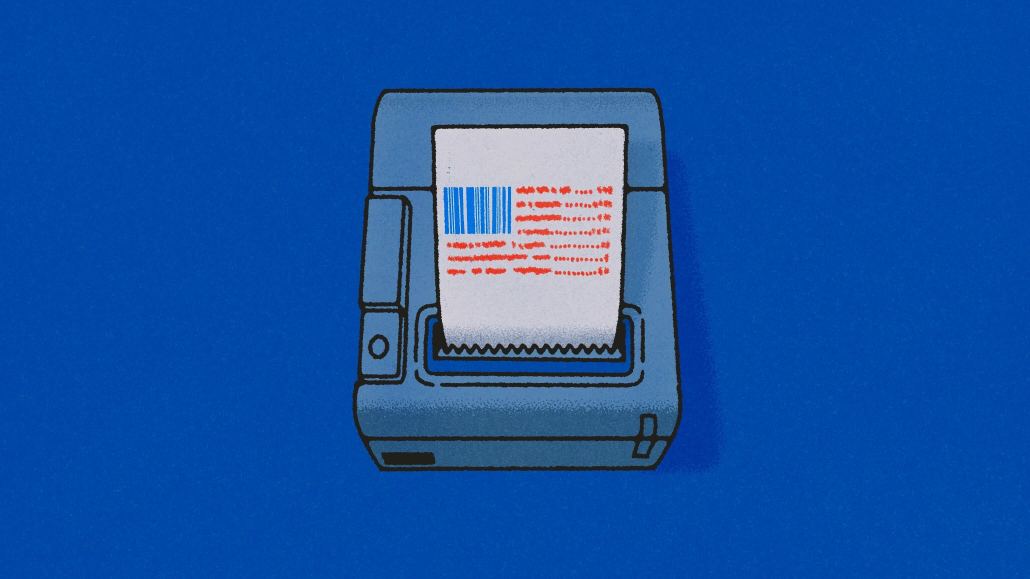Insights from CTV leaders at Dentsu, Horizon Media and more
How CTV and DOOH are growing this political season for smaller agencies

As a Digiday+ member, you were able to access this article early through the Digiday+ Story Preview email. See other exclusives or manage your account.This article was provided as an exclusive preview for Digiday+ members, who were able to access it early. Check out the other features included with Digiday+ to help you stay ahead
Agencies hope connected TV and digital out-of-home will play a bigger role in upcoming elections and politics — especially for smaller media agencies that are handling many of the less visible races in the crowded political space.
For a number of media agencies looking to place their political ad dollars down in this major election year, they are paying attention to CTV and DOOH as additional ways to engage with voters and audiences. Interestingly, it’s these media that are also spurring more political investment through programmatic means.
In some cases, this offers more opportunities for smaller and independent agencies to jumpstart local campaigns and use data more widely, said Johnathan Barnes, principal of agency Population Science, which focuses on programmatic in the political space.
“More things have gone programmatic since the last cycle of [the presidential election],” Barnes said.
The U.S. political ads landscape — especially given the upcoming presidential election — is expected to exceed record spending levels in 2024, with some $15 billion to $16 billion expected in political ad spend, according to Statista.
CTV and DOOH engagement
As options in the digital ad landscape continue to proliferate, platforms are working closely with media agencies to navigate walled gardens with their political ad spend this year. Mike Hauptman, founder and CEO of AdLib Media Group, a programmatic media buying platform that spun out of MediaMath, works with agencies and advertisers like Population Science.
With DOOH in particular, targeting and access has improved to where advertisers can select screen by screen, or even intersection by intersection, like at a specific bus stop, Hauptman explained.
“There’s been a dramatic shift in addressability and supply since the last election cycle,” he said. “If it’s working, and if you put a QR code in there and you’re measuring how many people are winding up on your campaign page or you have some kind of a vanity URL, you can still measure effectiveness and in areas that it’s working … [so you can] automatically spend more in real-time — just the same as you would in Facebook by entering more budget.”
Barnes also said using CTV helps clients spend more nimbly and strategically. Despite the predicted billions in spend, he explained that a lot of campaigns do not have the budgets “to just basically throw against the wall.”
“It’s really critical for those [local] campaigns, which are really the vast majority of campaigns out there, to be nimble with their spend [and] to be targeted with their spend,” Barnes told Digiday. With micro-targeting, “CTV can target exactly who you’re trying to reach — 90% of people stream some content.”
Kelly Rollinson, director of client leadership at full-service digital agency Croud, agreed that data shows video content through YouTube and CTV “typically dominate digital media spend” in regions with closely contested races.
“With DOOH and CTV becoming increasingly popular more generally, there’s no reason why, with critical elections on the horizon, they won’t be utilized at a high rate for political campaigns,” Rollinson added. “We’ve seen from real-time performance metrics that digital media spend has a significant influence on the outcomes of these elections.”
Whether CTV or DOOH will fare better in growing its share of political ad dollars remains to be seen. Barnes suspects both will go up “significantly,” adding that, “part of it is some downstream effects that we don’t have control over when it comes to fundraising by the different parties … That being said, I expect significant increases, and I’m already seeing those from some of the money that’s been spent during the primary season.”
David Algranati, chief innovation officer of Comscore, noted that recent CTV research shows some rural communities in the U.S. actually have greater CTV viewership “that indexes higher than more urban regions, which seems counterintuitive … It’s apparent that any campaign allocating their media spend and content placement without considering these over indexing rural areas is likely to get their allocations wrong.”
Brand safety measures
Rollinson said these trends are also a sign that agencies need to step up their brand safety measures in a major political season. This is especially true with intense news coverage and sensitive social issues after a debate or event.
“If brands don’t want to show up in arenas with high political coverage, there are steps that can be taken from agencies to redirect spending toward different channels with minimal political coverage,” Rollinson said. “Aside from our rigorous brand safety measures, we’ll be conducting real-time audits on emerging trends to augment keywords, targeting and blocklists in campaigns.”
While some media agencies said they are so far seeing minimal changes in budgets across channels, the big focus for clients this season will be brand safety and suitability — “rather than avoid or minimize spend in certain channels,” said Marcy Greenberger, chief investment officer at UM.
In particular, Greenberger said “advertisers will seek to limit exposure and adjacency to certain content within channels.” Some advertisers are more risk-averse and want to avoid running ads related to political discourse.
Being that CTV and DOOH tend to shy away from news-related content (unless it’s a streaming news service), those media hope that come the end of November, they will have sliced out a bigger piece of the political ad pie.
More in Media Buying

When should an agency go the ESOP route, and what are the risks?
Boiled down to their essence, ESOPs are when an owner or founder sells their stake in an agency to the employees who all receive stock, most often held in a trust.

Media Buying Briefing: The upfront isn’t moving along for a few surprising reasons
The marketplace is being slowed down due to increasing complexity, and discrepancies with Nielsen’s latest ratings system.

As Integral Ad Science marks its fourth anniversary on the Nasdaq, speculation mounts over its future
Efforts are underway to take IAS private but there are varying levels of interest from private equity groups.








